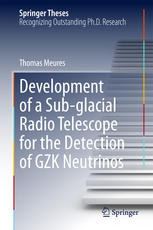

Most ebook files are in PDF format, so you can easily read them using various software such as Foxit Reader or directly on the Google Chrome browser.
Some ebook files are released by publishers in other formats such as .awz, .mobi, .epub, .fb2, etc. You may need to install specific software to read these formats on mobile/PC, such as Calibre.
Please read the tutorial at this link: https://ebookbell.com/faq
We offer FREE conversion to the popular formats you request; however, this may take some time. Therefore, right after payment, please email us, and we will try to provide the service as quickly as possible.
For some exceptional file formats or broken links (if any), please refrain from opening any disputes. Instead, email us first, and we will try to assist within a maximum of 6 hours.
EbookBell Team

4.0
36 reviewsThe goal of the project presented in this book is to detect neutrinos created by resonant interactions of ultrahigh energy cosmic rays on the CMB photon field filling the Universe. In this pioneering first analysis, the author puts forward much of the analysis framework, including calibrations of the electronic hardware and antenna geometry, as well as the development of algorithms for event reconstruction and data reduction. While only two of the 37 stations planned for the Askaryan Radio Array were used in this assessment of 10 months of data, the analysis was able to exclude neutrino fluxes above 10 PeV with a limit not far from the best current limit set by the IceCube detector, a result which establishes the radio detection technique as the path forward to achieving the massive volumes needed to detect these ultrahigh energy neutrinos.